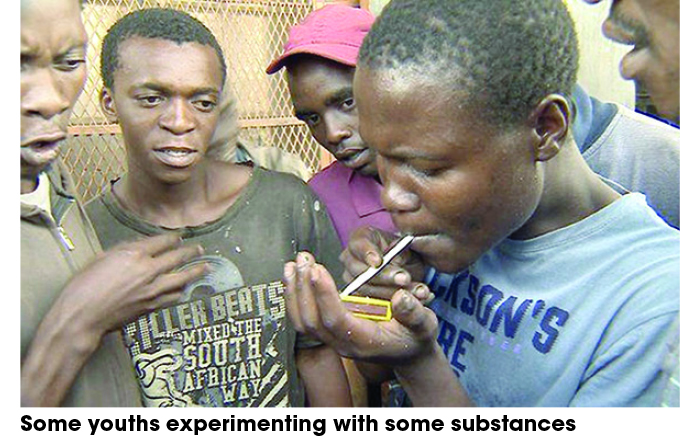
UNTIL recently, the issue of rising drug abuse among Zimbabwe’s youth has been in the periphery. Statistics coming out, however, show that this has become a major issue demanding urgent attention from authorities and society.
Earlier this week, Medicins Sans Frontiers (MSF) mental health nurse Regina Magore told journalists that nearly 50% of Zimbabwean youths are abusing drugs. She was quoting from statistics provided by the World Health Organisation.
By any measure, that is huge because according to the United Nations Population Fund, Zimbabwe is a very young country, with 62% of its 16 million population below the age of 25 years, the group mostly vulnerable.
Here is what she said: “For every four children, the probability of having two children abusing drugs is high. The onset of COVID-19 gave rise to issues of drug abuse to rise to 20% to 40%, while the probability of children (contracting) sexually transmitted infections are between 9% and 10%. The percentage of unwanted pregnancies and mental health problems has also doubled.”
The most commonly used substances in the country include glue, Bron Cleer, mangemba, marijuana, codeine and crystal meth.
According to reports, Zimbabwe’s illicit substance use problem has risen dramatically during the COVID-19 pandemic. It is noteworthy and very concerning that the rise in drug abuse has been among adolescents and youths, speaking to lack of opportunities for this age group.
Youths in this country face challenges such as high unemployment, limited educational opportunities, limited civic engagement opportunities. Ills such as teenage pregnancies and early marriages afflict a sizeable percentage.
Zimbabwe has also been classified as one of the countries where it is very difficult for young people to get jobs, with estimates that 20% of youths in the 18 to 24 age group have never been able to secure employment.
- Chamisa under fire over US$120K donation
- Mavhunga puts DeMbare into Chibuku quarterfinals
- Pension funds bet on Cabora Bassa oilfields
- Councils defy govt fire tender directive
Keep Reading
The young people in this country are also at the receiving end of poor governance and corruption. Zimbabwe’s general unemployment rate is estimated at 90% and many youths are resorting to vending and cross-border trade to eke out livelihoods.
Some simply jump the porous borders to look for opportunities elsewhere in the region.
Given the very high unemployment rate in Zimbabwe, it is high time authorities acted to deal with the rising poverty and despair which have seen a rising number of youthful citizens turn to drug abuse as a way of entertainment.
The onus is on the authorities to create an environment that allows our youth to prosper, give them choices that foster a healthy regard for hard work and morals.
This starts with creating a functional economy, and putting the youths at the centre for any economic plan.






